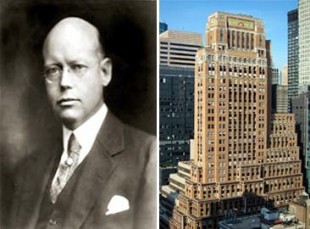Born into poverty, Fred F. French had to go to work as a young boy, selling newspapers and doing odd jobs to help support his family. Yet he also managed to stay in school, and eventually study engineering at Columbia University. When he died, he would be credited with building some of the most significant residential developments of the 20th Century, along with several notable office towers.
In 1925, he undertook Manhattan’s largest-ever housing project, on five acres along the East River in the 40s.
His plan was to build a $25 million “urban Utopia” of parks, gardens and neo-Gothic apartment buildings in an area dominated until then by slums, tenements and slaughterhouses. His aim was to provide affordable housing for office workers then fleeing Manhattan for the outer boroughs and the suburbs.
The project, called Tudor City, saw its first building open in 1927. Considered the world’s first residential skyscraper complex, it included 11 high-rises, four brownstones and a hotel, with roughly 3,000 units when complete.
Although there are still a good number of rental tenants, the properties, now across the street from the United Nations’ headquarters, went co-op in 1984.
French led an expansive lifestyle. And he once famously said, “You can’t overbuild in New York.”
By 1934, French was also at work building Knickerbocker Village, a multi-building complex for the working class on the site of another notorious slum between the Manhattan and Brooklyn bridges. It was one of the first federally subsidized urban renewal projects to be privately built and owned.
French also built several office towers, notably the Art Deco French Building at 45th Street and Fifth Avenue.
Among his innovations was the use of investment capital from individual investors, who purchased equity shares in his projects and were paid dividends before the developer took any profits.
